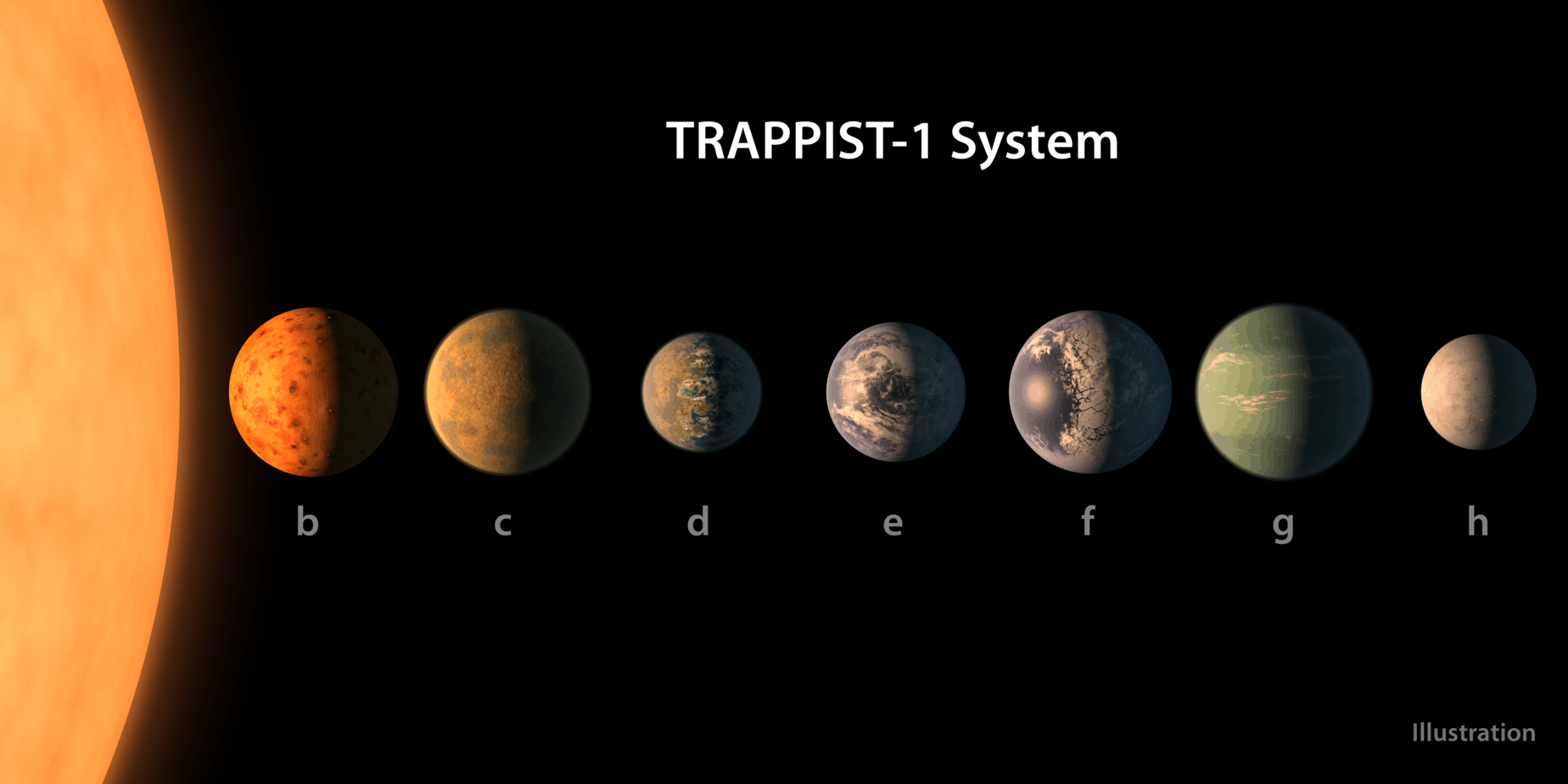Far into space, amongst the darkest Sea
New planets sit like marbles in a row.
We turn our eyes to find out what might be
And search for patterns in their ether’s flow;
Then try to see what else might lie below.
And as we probe how life’s rich web was spun,
Do they look back towards our distant sun?

This is a rhyme royal, inspired by recent research that has discovered seven Earth-sized planets orbiting around a single star.
Researchers used NASA’s Spitzer Space Telescope to make observations of the star and its exoplanets (planets which orbit a star outside our solar system) in a region of space within the Aquarius constellation, approximately forty-lightyears from Earth. This newly discovered system is called TRAPPIST-1, in honour of The Transiting Planets and Planetesimals Small Telescope (TRAPPIST) in Chile, which was used to make some of the measurements during the discovery process. Three of the TRAPPIST-1 planets lie within a region called the Habitable Zone, an area around a star in which there is likely to be rocky planets with liquid water that could potentially sustain life (i.e. the planets are neither too far nor too close to the star).
These newly discovered planets are also very close to each other. So much so that if a person were to stand on one of the planet’s surface, they could gaze up and potentially see clouds on the other planets. These observations represent a significant step forward in finding habitable environments elsewhere in the Universe, and further observations of the TRAPPIST-1 system are sure to reveal yet more secrets.
An audio version of the poem can be heard here.
Discover more from The Poetry of Science
Subscribe to get the latest posts sent to your email.
this is a nice poem Sam, my compliments!
These planets are certainly amazing, I would love to visit them.
Maybe there are organisms similar to insects or spiders there, with superhuman intelligence?
And nice that this mini-sun is named after a Belgian strong beer.
Have a very enjoyable weekend,
Rolf
Thanks Rolf,
Yes, I thought that this research was incredible. I also wonder what kind of life there might be, and if it need be carbon-based at all… Maybe such life forms have named our own Solar System after a similarly enjoyable beverage. 🙂
Wishing you a very pleasant weekend too,
Sam